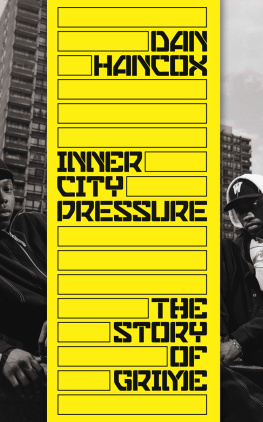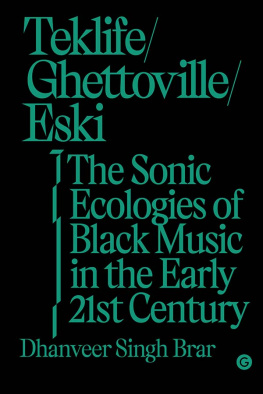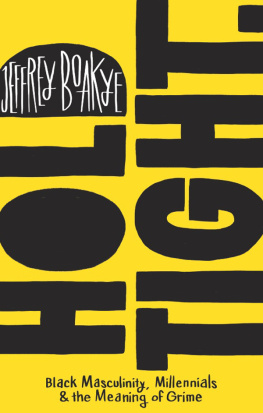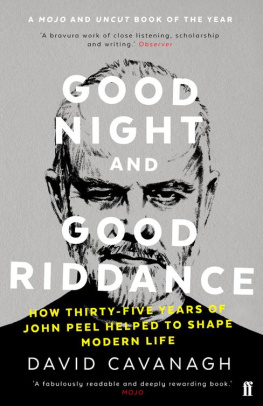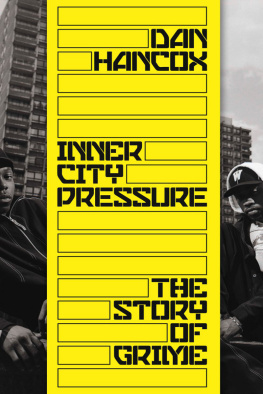William Collins
An imprint of HarperCollinsPublishers
1 London Bridge Street
London SE1 9GF
WilliamCollinsBooks.com
This eBook first published in Great Britain by William Collins in 2018
Copyright 2018 by Dan Hancox
Cover design by Jonathan Pelham
Cover image Getty
Dan Hancox asserts the moral right to be identified as the author of this work
A catalogue record for this book is available from the British Library
All rights reserved under International and Pan-American Copyright Conventions. By payment of the required fees, you have been granted the non-exclusive, non-transferable right to access and read the text of this e-book on-screen. No part of this text may be reproduced, transmitted, down-loaded, decompiled, reverse engineered, or stored in or introduced into any information storage and retrieval system, in any form or by any means, whether electronic or mechanical, now known or hereinafter invented, without the express written permission of HarperCollins..
Source ISBN: 9780008257132
Ebook Edition May 2018 ISBN: 9780008257149
Version: 2018-04-16
For my parents, Helen and Rod: thank you for bringing me up in London, among other things.
Contents
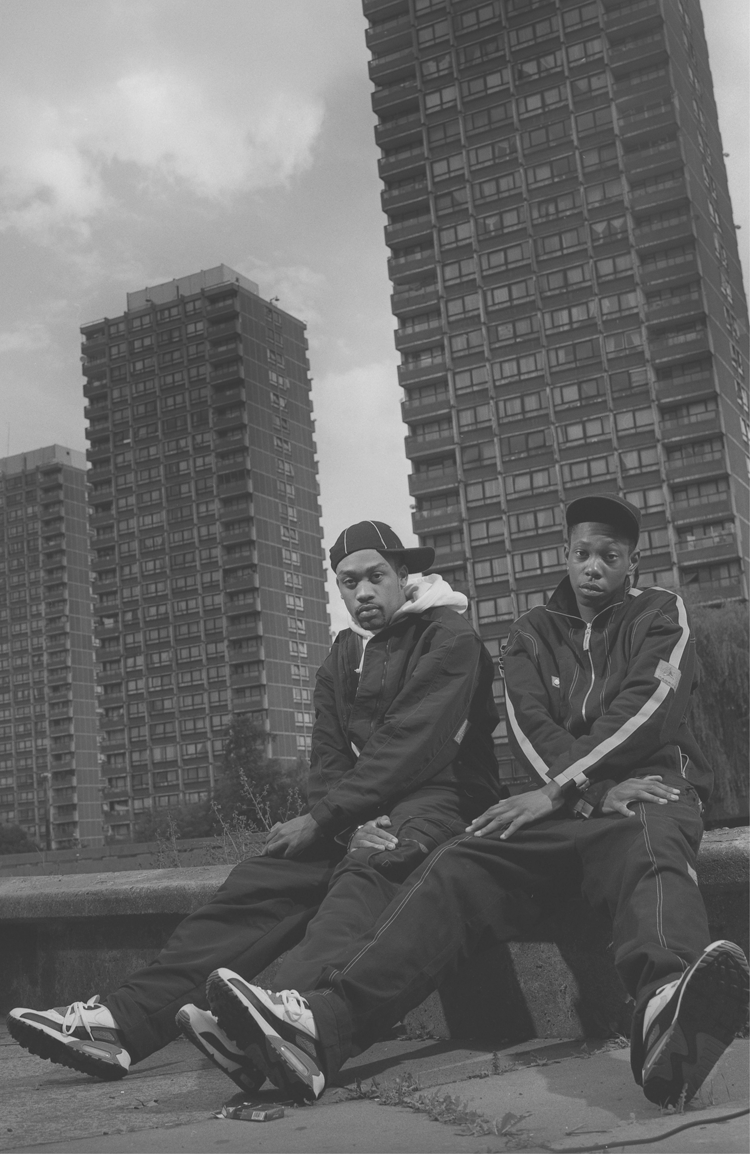
Dizzee and Wiley in front of Crossways Estate, aka the three flats, 2002
PROLOGUE
Its dusk on a spring evening in 2003, and the start of something exceptional: the hottest summer in years, a sweltering heatwave lifting temperatures in London above 100 degrees Fahrenheit. But its cooler when youre high up on a rooftop, and windy, so hoods are up and beanies are on. Around 20 members of the legendary east London crews Roll Deep, East Connection, Boyz in da Hood and Nasty Crew are squeezed into a makeshift pirate-radio studio, the occupied box room being used by Deja Vu FM. The average age in the room is about 17. A few hangers-on lean against the walls watching, part-time MCs nodding their heads to the beat, hoping to be given some time on the mic or just there to witness, without realising it, a seminal moment in the history of British music.
On the decks is Roll Deeps DJ Karnage, who slowly builds momentum with his freshly cut vinyl, exclusive unreleased instrumentals unavailable to the general public, and the mic is passed from MC to MC, each of them spitting their bars over the new dubplates.
The MC line-up ranges from graduates of the jungle and UK garage scenes such as Wiley, Maxwell D, Gods Gift and D Double E each of them veterans already, by virtue of being in their early twenties to early grime heroes Demon, Sharky Major and Lady Fury. Theres even a minuscule, half-squeaking, Tinchy Stryder, then only 16 years old.
The event is being filmed for an amateur DVD called Conflict by Troy A Plus Miller, who has begged his girlfriend to borrow the camera from her university media department for the summer, to shoot some footage of his mates on the east London pirate-radio scene. Miller, from far-away Hackney, has met Bow boys Wiley, Geeneus and Slimzee in the nineties through their shared love of jungle, and become involved with their station, Rinse FM, Deja Vus neighbour and rival. Wiley suggested he come down that day and film at Deja. No one had given me a tip, I wasnt expecting anything, he says.
In its early days grime really was a scene, with its own institutions and infrastructure, friendships and rivalries, independent record labels and shops, as well as the pirate stations. It was also a community, in which the (mostly teenage) MCs and DJs all knew each other: if not from school, from youth clubs or just from hanging around the local area, then through doing music. Their rejection by the older, more refined, aspirational and grown-up UK garage scene forged a unique camaraderie, and drove the music to new heights of innovation the competitive bravado forcing MCs to keep writing new, bolder, better lyrics.
Like all pirate stations, Deja Vu FM is by definition illegal, and its secret studio location has been moved regularly to escape the Department for Trade and Industry. In summer 2003, its in a grotty whitewashed box room one window boarded up with chipboard, another blocked out with a bin bag up on the rooftop of the same building that housed the notorious EQ Club, where numerous seminal UK garage nights took place. Deja was the maddest one, MC Shystie says. Because the studio was on a rooftop, and the roof literally had no edge: so if you take one wrong move, youre dead. We should not have been up there! Because it would be late at night, and dark so if someone gets pushed, or someone trips and falls back, theyre going to fall off that fucking roof and die. Its mad when you look back at it now: nowadays the radio stations all look like how 1Xtra looks, all nice and shit and theyre all in flipping Shoreditch.
When Conflict was filmed, the geographical horizons were as narrow as the sonic ones were wide: Thats where Im from, Bow E3, Wiley boasts into the Deja Vu mic at one point. Im like the 38 bus, because I never turn up! he continues, shouting out north-east Londons least reliable bus service. This closed-world intensity, bordering on claustrophobia, vibrates outwards from the crowded little Deja Vu studio, in the MCs clamour for a turn on the microphone.
The Conflict video is grime at the point of its creative eruption still unnamed, but undeniably alive as the futuristic mutations of UK garages slinky charm settled into the shape of an explosive new genre. This was the exact moment when the effusive charisma and hype of the MCs began to take over the show. Prior to that, anyone with a mic in their hand was first of all answerable to the beat, to the producer-DJ auteur, and pirate radio was all about rolling out the instrumentals building a steady, if restless momentum. The MC was a performer, and a host: a master of ceremonies, but also, in the parasitic sense, possessed by those pioneering early grime beats and their subdivisions Wileys eskimo, Jon E Cashs sublow all of them summoning a kind of macabre, horror-show minimalism.
Theres D Double E, the lanky, cheeky fans favourite, also known as the Newham General, not in military fatigues tonight but shrouded in a black boxers hoodie, with a skippy, idiosyncratic flow and his own verbal audio-logo, the D Double signal, which is not easily transcribed, but sounds something like: Ooooerhhhhhh, ooooerhhhhhh its muuuuweee, muuuuuweee. Theres Maxwell D, who in his early twenties has already been to hell and back, survived an upbringing of domestic violence, sheltered accommodation, hostels and foster care, been on TV on Crimewatch gone to jail for armed robbery, come out, become a major UK garage MC and a major drug dealer (at the same time), had hits and gone back on primetime TV, but as a pop star. Theres Lady Fury, unmoved by being as she often was the only woman in a room full of jostling male egos, getting plaudits for her ferocity: I dont give head, but I give headbutts, she spits, and the record playing underneath, Ho by Dizzee Rascal, is wheeled back as her male peers throw their hands up. Dun no I represent for the ladies, she says, as the stuttering gunshots of the instrumental start up again. Theres Tinchy Stryder, still in school, expounding the strange wisdom of youth, brand new energy, same old Stryder, he spits, like hes been doing this for years he has clutching the microphone with both hands like his life depends on it. And then theres Wiley, the godfather of grime, whose manic enthusiasm and hilarious non-sequiturs suddenly give way to moments of sublime clarity, like when he captures the whole bizarre and uniquely skittish practice of grime MCing: Im futuristic, quantum leaping/theres no defeating E3 tiger/see me creep on the riddim like a spider/kill them with a 16-liner. Grime spitting is twice the speed of US-style rap: typically, you had just 16 bars to show your skills (or 21 seconds, in So Solid Crews case), before passing the mic to the next MC it is the most thrilling, exhausting, ADHD onslaught of a genre: a tension headache you can dance to. Andy Warhols generation should count themselves lucky they got fifteen entire minutes to make an impact. But for all the idiosyncratic talents, theyre in it together. The powerful conviviality and kinship in a genre where lyrical threats of violence are one of the primary means of communication may be surprising, but its there all the same a chain created between artists every time the mic is passed from one MC to the next.

